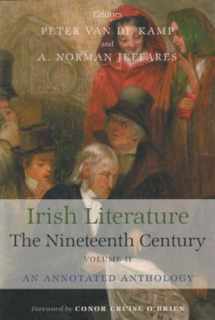
Irish Literature: The Nineteenth Century, Vol. 2
Book details
Summary
Description
The second of the three volumes, roughly spans the middle decades of the nineteenth century, a period dominated by the enormity of the Great Famine. Its terror is recorded in first-hand accounts and in the powerless yet forceful reactions which this cataclysmic event engendered in such writers as John Mitchel (who in his Jail Journal pits the self against the state). This volume documents the rise of cultural nationalism, in the work of the contributors to The Nation (Davis, Mangan, Lady Wilde), and the response of Unionist intelligentsia in the Dublin University Magazine. It juxtaposes the authentic Gaelic voice in translation (Ferguson and Walsh) against the haunting intensity of Mangan and the non-conformism of his fellow inauthenticator Father Prout. It witnesses the stage Irishman in Lever's fiction being placed on Boucicault's popular podium, in his reworking of Gerald GriffinÃ?Â?Ã?Âs account of The Colleen Bawn. It records the rise of Fenianism (in such writers as Charles Kickham), and it sees Ireland taking stock (in the work of W.E.H. Lecky). It notes the emergence of a new literary confidence in the works of Sigerson and Todhunter. It extends well beyond examinations of Irish identity, not only in encapsulating popular writing, but also by incorporating writers of Irish descent who investigated different cultures.


We would LOVE it if you could help us and other readers by reviewing the book
Book review



